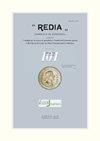意大利托斯卡纳地区5年调查及在阿根廷山采集的苛养木杆菌亚种多重潜在病媒的检测
IF 0.6
4区 生物学
Q3 ZOOLOGY
引用次数: 3
摘要
病媒传播的苛养木杆菌(Xylella fastidiosa, Wells和Raju)对植物造成几种严重疾病。近年来,在欧洲一些国家报道了不同亚种的苛养假单胞菌。这种细菌在整个欧洲领土上传播的风险非常高;因此,它已被添加到优先害虫列表中(2019/1702/EU法规)。本研究的主要目的是验证托斯卡纳地区存在潜在病媒,并确定这些病媒中是否存在苛养x虫。从2015年到2019年,收集并分析了超过4000种秋茶。在木质部取食汁液的推定媒介昆虫中,收集到的大多数昆虫属于蚜科,但也鉴定出许多种叶蝉。总体而言,托斯卡纳最具代表性的有4种:spumarius Philaenus (L.)、Cicadella viridis(L.)、Synophropsis lauri (Horvath)和Neophilaenus campestris(Fallen)。2018年,苛养螺旋体亚种爆发。在Monte Argentario (Grosseto省,托斯卡纳)报告了多重感染。2019年,在疫区采集的7只spumarius和3只campestris中检测到苛养x虫多重亚种ST 87。本文章由计算机程序翻译,如有差异,请以英文原文为准。
A FIVE-YEAR SURVEY IN TUSCANY (ITALY) AND DETECTION OF XYLELLA FASTIDIOSASUBSPECIES MULTIPLEXIN POTENTIAL INSECT VECTORS, COLLECTED IN MONTE ARGENTARIO
The vector‐borne bacterium Xylella fastidiosa(Wells and Raju) causes several serious diseases to plants. Recently, different subspecies of X. fastidiosa were reported in some European countries. The risk of the bacterium’s spread on the entire European territory is very high; therefore, it has been added into the priority pest list (2019/1702/EU Regulation). The main purposes of this work were to verify the presence of potential vectors in areas at a high risk of introduction in Tuscany and to ascertain the presence of X. fastidiosa in these insect vectors. Over 4,000 Auchenorrhyncha were collected and analysed from 2015 to 2019. Among the xylem sap-feeder putative vectors, most of the insects collected belonged to the family Aphrophoridae, but also many species of leafhopper were identified. Overall, in Tuscany four species were the most represented: Philaenus spumarius(L.), Cicadella viridis(L.), Synophropsis lauri (Horvath) and Neophilaenus campestris(Fallen).In 2018 an outbreak of X. fastidiosa subsp. multiplex was reported in Monte Argentario (Grosseto province, Tuscany). In 2019 X. fastidiosa subspecies multiplex ST 87 was detected in seven P. spumarius and three N. campestris collected from the infected area.
求助全文
通过发布文献求助,成功后即可免费获取论文全文。
去求助
来源期刊

Redia-Giornale Di Zoologia
ZOOLOGY-
CiteScore
1.20
自引率
20.00%
发文量
18
审稿时长
>12 weeks
期刊介绍:
Redia supports its long history of basic and applied research in entomology and invertebrate zoology in the field of crop and forest tree protection responding at the same time to the increasing need of innovation and technological improvement.
 求助内容:
求助内容: 应助结果提醒方式:
应助结果提醒方式:


